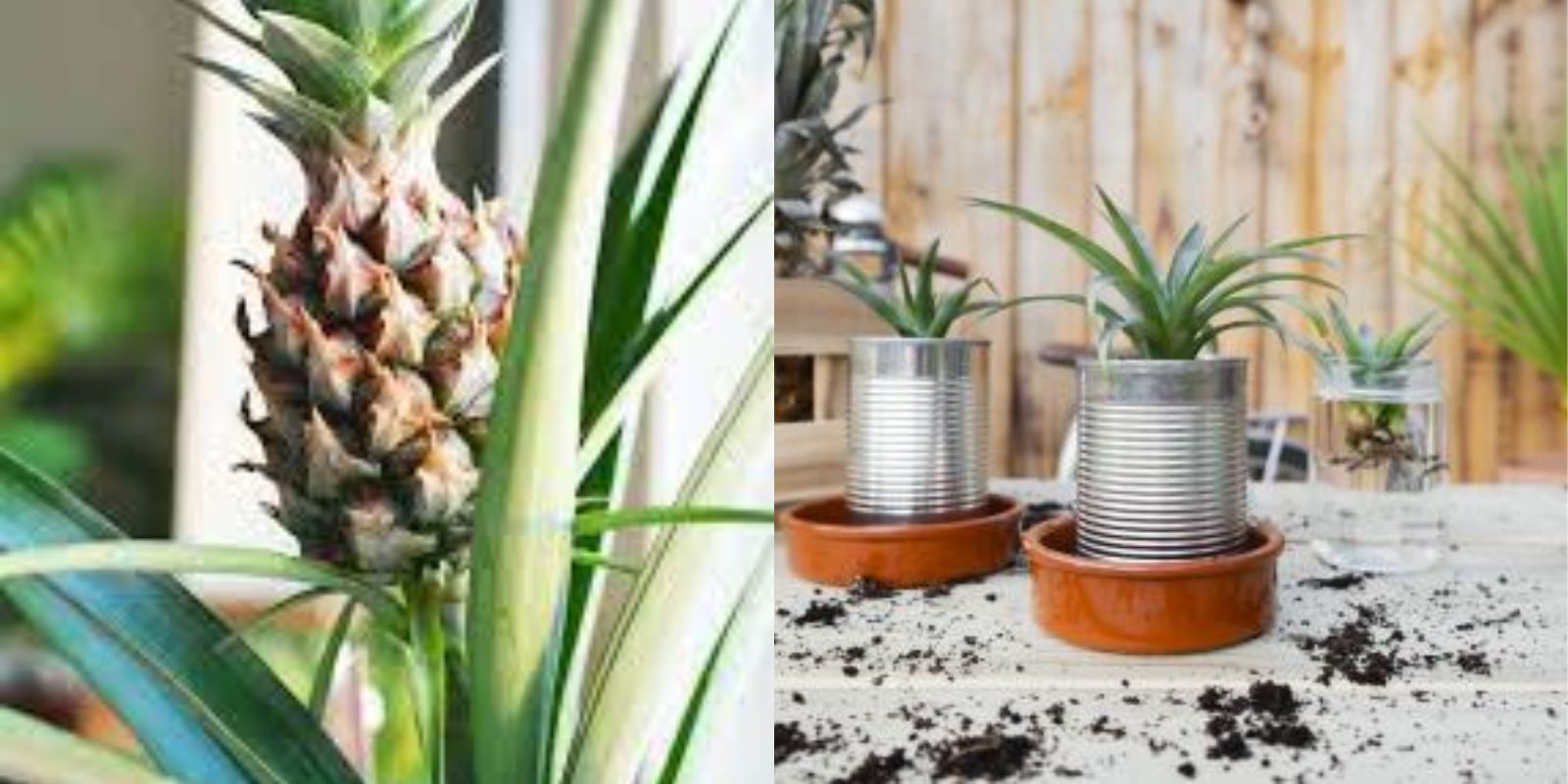Growing pineapples at home is a delightful and rewarding journey, perfect for anyone who loves gardening or wants to try their hand at cultivating tropical plants. Pineapples are not just a delicious fruit but also a stunning addition to your garden or indoor plant collection. With a little patience and care, you can transform a store-bought pineapple into a thriving plant that bears fruit. This comprehensive guide will take you through every step of the process to ensure success.
Why Grow Pineapples at Home?
Growing pineapples at home offers multiple benefits:
- Cost-Effective: A single pineapple crown can yield fruit without additional costs.
- Tropical Beauty: Pineapple plants are visually striking and add a lush tropical vibe to your space.
- Sustainability: Instead of discarding the pineapple crown, repurpose it into a productive plant.
- Rewarding Experience: Watching your plant grow and eventually produce fruit is incredibly fulfilling.
Step-by-Step Guide to Growing Pineapples at Home
1. Selecting the Right Pineapple
The first step in growing pineapples is choosing the right fruit. When shopping for a pineapple, look for one with:
- A fresh, green crown with no signs of wilting or browning.
- Firm, golden-yellow skin.
- A sweet aroma at the base.
Avoid pineapples with damaged or rotting tops, as these may not sprout successfully.
2. Preparing the Pineapple Crown
Once you have your pineapple, separate the crown (the leafy top) from the fruit:
- Grasp the crown firmly and twist it off from the fruit. Alternatively, use a sharp knife to cut off the top, leaving about an inch of fruit attached.
- Remove the lower leaves to expose about an inch of the stem. This part will develop roots.
- Allow the crown to dry for 1–2 days in a shaded area. Drying prevents rotting when you begin the rooting process.
3. Rooting the Crown in Water
Rooting the pineapple crown in water helps speed up the growth process:
- Place the crown in a glass of water, ensuring only the bottom part of the stem is submerged.
- Change the water every 2–3 days to keep it fresh and oxygenated.
- Position the glass in a bright area but away from direct sunlight.
- In 1–2 weeks, you should see small roots forming.
4. Transplanting the Crown to Soil
Once roots are about 2 inches long, it’s time to plant the crown in soil:
- Choose a pot with good drainage and a diameter of at least 8–12 inches to accommodate the growing plant.
- Use a well-draining potting mix, ideally a combination of regular soil, sand, and organic compost.
- Plant the crown so that the base of the leaves is just above the soil line.
- Water lightly to settle the soil around the roots.
5. Providing Proper Care
Pineapple plants thrive with proper care and attention:
- Sunlight: Place your plant in a spot with 6–8 hours of sunlight daily. If growing indoors, a sunny windowsill or a grow light will work.
- Watering: Pineapples prefer slightly dry conditions. Water sparingly, ensuring the soil dries out between waterings. Overwatering can lead to root rot.
- Temperature: Pineapples are tropical plants and thrive in temperatures between 65°F and 85°F. Protect them from frost and cold drafts.
6. Fertilizing for Growth
To encourage healthy growth, fertilize your pineapple plant:
- Use a balanced, slow-release fertilizer or a liquid fertilizer diluted to half strength.
- Apply fertilizer every 6–8 weeks during the growing season (spring and summer).
- Avoid over-fertilizing, as it can harm the plant.
7. Patience and Maintenance
Growing pineapples requires patience. It can take 18–24 months for your plant to produce fruit. In the meantime:
- Keep the plant healthy by removing any dead or yellowing leaves.
- If you notice pests like mealybugs, treat them with insecticidal soap or neem oil.
- Repot the plant into a larger container if it outgrows its current pot.
8. Encouraging Flowering
Pineapples produce fruit after flowering. If your plant hasn’t flowered after two years, try these tricks:
- Place the plant in a plastic bag with a ripe apple for a week. The ethylene gas released by the apple stimulates flowering.
- Ensure your plant is getting adequate light and nutrients.
9. Harvesting Your Pineapple
Once the fruit begins to form, it will take about 6 months to mature. You’ll know it’s ready to harvest when:
- The skin turns golden yellow.
- The fruit emits a sweet aroma.
- The fruit feels firm but slightly soft to the touch.
Twist the pineapple off the plant, and enjoy your homegrown treat!
Tips for Success
- Pineapple plants can also be grown outdoors in tropical or subtropical climates.
- They require minimal pruning, making them low-maintenance.
- Save the new crowns from your harvested pineapples to grow more plants.
Conclusion
Growing pineapples at home is a simple yet rewarding process that brings a touch of the tropics to your garden or indoor space. With minimal effort and patience, you can enjoy the satisfaction of harvesting your own sweet, juicy fruit. Whether you’re an experienced gardener or a beginner, pineapple cultivation is an excellent project to embark on.
Have you tried growing pineapples at home? Share your experience, tips, or photos in the comments below and inspire others to join the fun!

